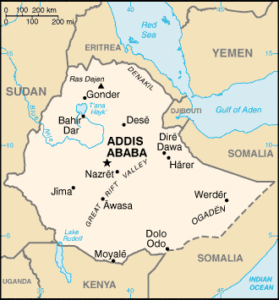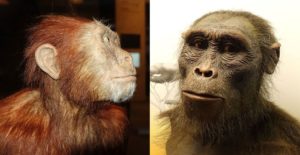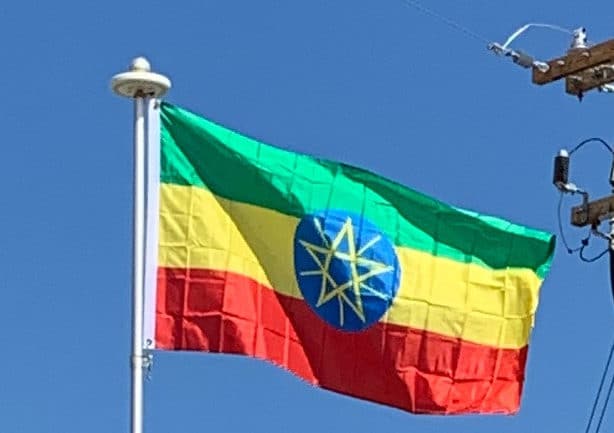
The nation is a land of natural contrasts, with its vast fertile west, its forests and its numerous rivers, and the world’s hottest settlement of Dallol in its north. The Ethiopian Highlands are the largest continuous mountain ranges in Africa, and the Sof Omar Caves contains the largest cave on the continent. Ethiopia also has the most UNESCO World Heritage Sites in Africa. Additionally, the sovereign state is a founding member of the UN, the Group of 24 (G-24), the Non-Aligned Movement, the G77 and the Organisation of African Unity. Its capital city, Addis Ababa, serves as the headquarters of the African Union, the Pan African Chamber of Commerce and Industry, the United Nations Economic Commission for Africa, the African Standby Force and many of the global NGOs focused on Africa. In the 1970s and 1980s, Ethiopia experienced civil conflicts and communist purges, which hindered its economy. The country has since recovered and as of 2010 has the largest economy (by GDP) in East Africa, having the largest population in the region. Despite these improvements, it remains one of the world’s poorest countries. In addition to poverty, Ethiopia faces hunger, corruption, weak infrastructure, and poor access to health and education (with an illiteracy rate of 51%), ranking in the lowest quartile on the Human Development Index. The Ethiopian government’s respect for human rights is also said to remain poor.
History:
Pre-History:
Several important finds have propelled Ethiopia and the surrounding region to the forefront of palaeontology. The oldest hominid discovered to date in Ethiopia is the 4.2 million year old Ardipithicus ramidus (Ardi) found by Tim D. White in 1994. The most well known hominid discovery is Australopithecus afarensis (Lucy). Known locally as Dinkinesh, the specimen was found in the Awash Valley of Ethiopia’s Afar Region in 1974 by Donald Johanson, and is one of the most complete and best preserved adult Australopithecine fossils ever uncovered. Lucy’s taxonomic name refers to the region where the discovery was made. The hominid is estimated to have lived 3.2 million years ago.

Ethiopia is also considered one of the earliest sites of the emergence of anatomically modern humans, Homo sapiens. The oldest of these local fossil finds, the Omo remains, were excavated in the southwestern Omo Kibish area and have been dated to the Middle Paleolithic, around 200,000 years ago. Additionally, skeletons of Homo sapiens idaltu were found at a site in the Middle Awash valley. Dated to approximately 160,000 years ago, they may represent an extinct subspecies of Homo sapiens, or the immediate ancestors of anatomically modern humans. Archaic Homo sapiens fossils excavated at the Jebel Irhoud site in Morocco have since been dated to an earlier period, about 300,000 years ago, while Omo-Kibish I (Omo I) from southern Ethiopia is the oldest anatomically modern Homo sapiens skeleton currently known.
According to linguists, the first Afroasiatic-speaking populations arrived in the region during the ensuing Neolithic era from the family’s proposed urheimat (“original homeland”) in the Nile Valley, or the Near East. Other scholars propose that the Afroasiatic family developed in situ in the Horn, with its speakers subsequently dispersing from there.
